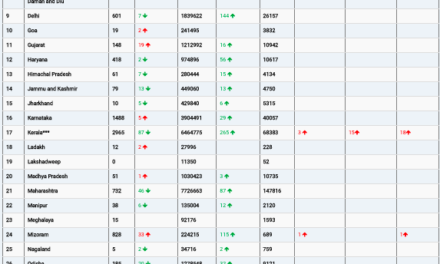Los Angeles, CA — A recent study by Keck Medicine of USC, published in the Annals of Internal Medicine, has found that an increase in alcohol consumption during the COVID-19 pandemic has not subsided in the post-pandemic period. This study, drawing on data from the National Health Interview Survey, shows that the rise in alcohol use seen during the pandemic has held steady well into 2022, indicating potentially lasting shifts in American drinking habits.
Comparing data from 2018 (pre-pandemic) to 2020 (the peak of the pandemic), the study reports that heavy alcohol use among Americans increased by 20%, while any alcohol use rose by 4%. By 2022, these levels of alcohol consumption remained elevated, signaling that the pandemic’s influence on drinking behavior may have enduring effects.
The study’s findings show that this increase was observed across nearly all demographics, including various age groups, genders, races, ethnicities, and regions, with the exception of Native American and Asian American communities. Adults aged 40-49 experienced the most significant rise in heavy alcohol consumption, underscoring concerns about middle-aged adults’ vulnerability to alcohol-related health risks.
“These numbers reflect an alarming public health issue that could result in severe health consequences for far too many people,” said Dr. Brian P. Lee, principal investigator of the study and a hepatologist and liver transplant specialist at Keck Medicine of USC. “Our results suggest that men and women under 50 are at special risk.”
Excessive alcohol use is a leading preventable cause of illness and death in the U.S., according to the Centers for Disease Control and Prevention (CDC). Alcohol accounts for half of all liver-related deaths and is now the primary reason for liver transplants. Dr. Lee highlights that alcohol-related cirrhosis has become a major concern, reflecting a rising burden on the healthcare system.
The study utilized data from over 24,000 adults aged 18 and older, collected as part of one of the nation’s most extensive health surveys. Researchers evaluated changes in alcohol use between 2018 and 2020, and then compared 2018 data to 2022, characterizing alcohol use as “any use” or “heavy use” (defined as more than five drinks a day or 15 drinks a week for men, and more than four drinks a day or eight drinks a week for women).
While the research did not analyze the exact causes behind the increased drinking patterns, Dr. Lee speculates that the pandemic’s social and economic pressures may have contributed to more normalized alcohol use. The study suggests that the disruptions to work and personal routines, particularly for those in the 40-49 age group, may have led to higher drinking rates among this cohort.
Dr. Lee hopes these findings will prompt healthcare providers to prioritize screening for harmful drinking and provide targeted interventions for those at risk. “We encourage healthcare providers to offer more screenings for harmful drinking as well as interventions for at-risk populations,” he said.
The study was led by Dr. Divya Ayyala-Somayajula of Thomas Jefferson University in Philadelphia, with contributions from Jennifer Dodge, MPH, Adam Leventhal, Ph.D., and Dr. Norah Terrault, all affiliated with the Keck School of Medicine at USC.
For additional insights: [Divya Ayyala-Somayajula et al, Trends in Alcohol Use After the COVID-19 Pandemic: A National Cross-Sectional Study, Annals of Internal Medicine (2024)]











